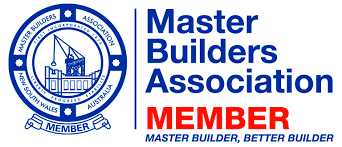What is rising damp (or salt damp)
Rising damp (or salt damp, as it is known in many parts of the world) is not the most common form of dampness encountered in buildings; this is left to condensation. However a high proportion of older buildings are affected by rising damp to some degree or another. In general, walls prior to the 1970s did not have damp courses or inferior ones, which allowed the damp to rise in capillary action. In many cases of rising damp in more modern walls the causes are often traced back to bridging/ breaching of the D.P.C. (Damp Proof Course).
Rising damp in buildings may be defined as the vertical flow of water up through a permeable wall structure, the water being derived from ground water. The water rises through the pores (capillaries) in the masonry by a process loosely termed "capilliarity." In other words the masonry acts like a wick.
By natural evaporation from the surface of walls, rising damp seldom occurs above a height of 1.5 metres unless forced higher by being sandwiched between two impervious layers of render, gloss paint or wall paper. Temporary measures, like cleaning the surface, replastering or just repainting can actually make the situation even worse.
The rising damp also carries with it hydroscopic salts (nitrates and sulphates) and as dampness evaporates from the wall surface the salts are deposited in the plasterwork, which build up into a concentration, that can absorb moisture from the air making the situation critical.
Rising damp can be more serious than just causing aesthetic damage, structural damage to the base of the wall can also occur which if left unchecked could lead to dire consequences.
How do you treat it?
There are two methods of tackling salt damp or rising damp. The removal and replacement of old affected bricks and or stone with new ones with a new plastic damp course underneath, called 'Undersetting'. This method if done correctly will solve the problem, but is usually more costly, messy, time consuming and can compromise the structural integrity and the originality of the building. The other alternative is to place a chemical damp course at the lowest point of the wall, to create a barrier preventing any more rising saline water entering the wall above this point. We are one of the few companies in Australia who offer both physical and the chemical pressure injected damp proofing methods. We believe the chemical pressure injection method, which has been perfected over many years, is far superior to any other type of damp proofing solution but are happy to discuss both solutions with the customer.
Chemical Pressure Injected Damp Proof Method:
- Our fully qualified Anti-Damp specialists will carry out a full survey on your premises to diagnose the cause of the damp problem. If rising damp is the problem then.
- The extent of rising damp will be identified with electronic moisture meters.
- Wall coverings, render etc. will be removed to expose masonry or brick work only if required and normally only the affected area. Injection ports will be drilled along the identified damp course line then Tech-Dry Damp-Coursing Fluid which is odourless and safe to use will be pressure injected into the wall using specially designed pumps and lances to create a new damp proof course.
- All rubbish and waste material will be removed.
Physical Damp Proof Method:
- Our fully qualified Anti-Damp specialists will carry out a full survey on your premises to diagnose the cause of the damp problem. If Rising Damp is the problem then.
- The extent of rising damp will be identified with electronic moisture meters.
- Wall coverings, render etc. will be removed to expose masonry or brick work only if required and normally only the affected area. The mortar between two bricks or stones is cut out in sections (if any masonry is badly affected or damaged they will be replaced). A plastic membrane is inserted between the bricks and fresh mortar is applied. As this can only be done a few brick lengths at a time the wall is repaired in sections.
- All rubbish and waste material will be removed.



